Understanding Blue Oak Regeneration  1998
1998
Tedmund J. Swiecki and Elizabeth BernhardtPhytosphere Research, Vacaville, CA
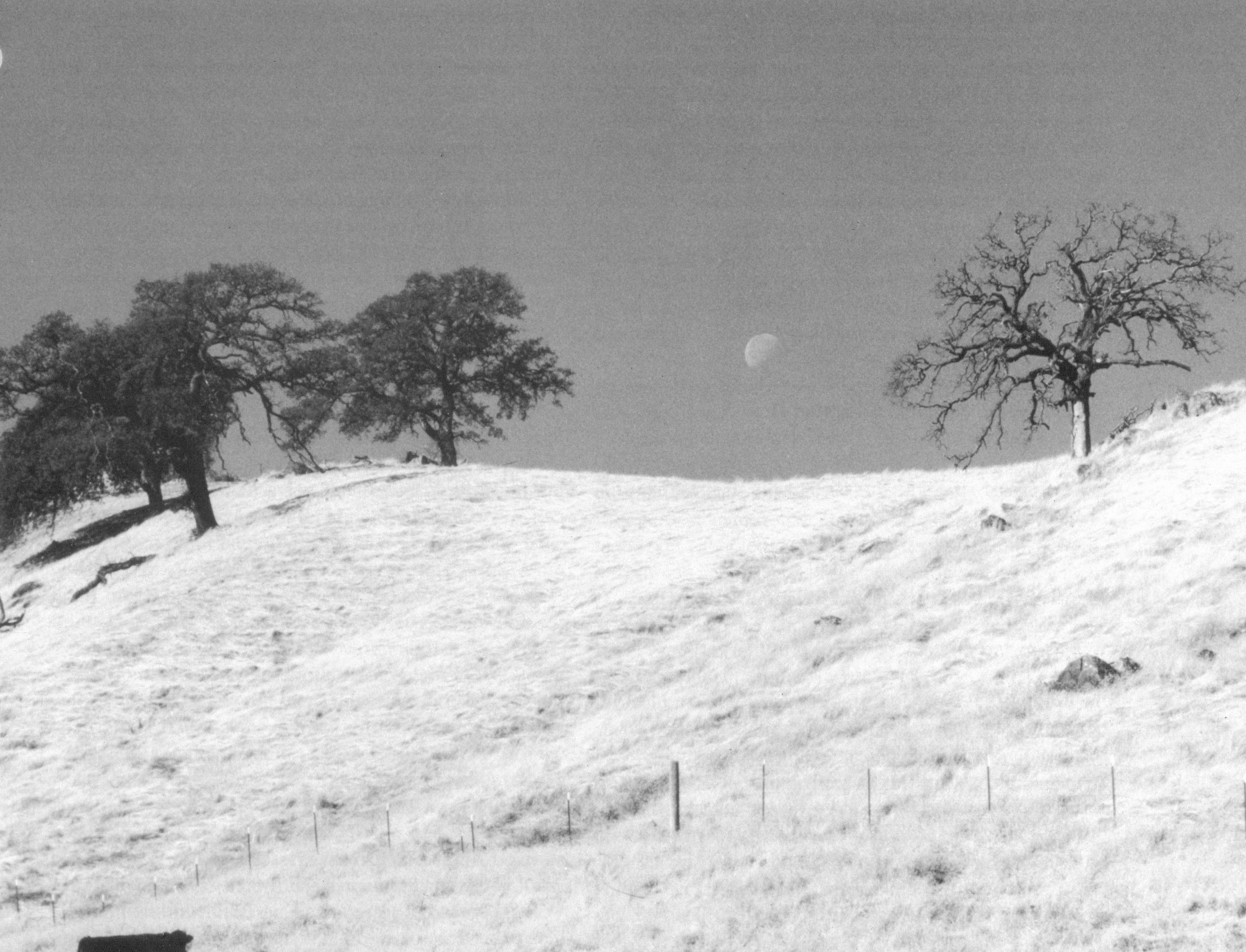
Blue oak woodlands around Vacaville, CA, have been highly disturbed in the past 150 years due to clearing, grazing, and non-native plant introductions. Blue oak stands can thin to the point of extinction due to unreplaced mortality.
Citation: Swiecki, T. J; Bernhardt, E. A. 1998. Understanding blue oak regeneration. Fremontia 26 (1): 19-26
Blue oak (Quercus douglasii) is a drought-tolerant deciduous oak that is endemic to California's Sierra Nevada foothills and Coast Ranges. Woodlands dominated by blue oak cover almost 3 million acres in California and rank as the most abundant hardwood forest type in the state. Blue oak may occur in nearly pure stands, as a dominant in mixed stands that include foothill pine (Pinus sabiniana), interior live oak (Q. wislizeni), valley oak (Q. lobata), and/or coast live oak (Q. agrifolia), or as a minor component in mixed stands of oaks and other hardwoods.
Blue oak presents an apparent paradox because this common and well-adapted species is now regenerating poorly over much of its current range. In 1992, we surveyed 150-acre sections of blue oak woodland at each of 15 locations distributed throughout the range of blue oak. Although mortality of overstory blue oak trees had occurred within the past 30 years at all 15 locations, we found sapling recruitment at only 11 locations. When we examined the balance between plots with density losses due to mortality and plots with the potential for density gain due to sapling recruitment, we concluded that 13 of the 15 locations were losing blue oak density at the stand level due to unreplaced mortality. Consistent with our results, surveys by Bolsinger and Muick and Bartolome have also indicated that blue oak sapling populations are insufficient to maintain current stand densities.
The lack of a unifying model of blue oak regeneration has led to disagreement over the severity of the regeneration problem and conflicting recommendations for sustainable management of blue oak woodlands. In this paper, we seek to integrate recent experimental data with a century's worth of ecological observations to build a conceptual model of blue oak regeneration. The model we describe here allows us to develop reasonable explanations for both current and past regeneration patterns and points toward strategies for sustainable management of blue oak woodlands.
A model of blue oak regeneration
Quercus species produce seed crops that vary widely in quantity from year to year. Most acorns land under or near the canopy of the parent tree, although some are planted beyond the canopy by seed-eating animals. No long-term seed banks exist for oaks because acorns do not survive from year to year.
In place of a seed bank, most oaks regenerate from a bank of persistent seedlings beneath the canopy, which is also known as advance regeneration. The seedlings which constitute advance regeneration are suppressed by competition from the overstory. These understory seedlings may survive for years, producing a strong root system but little shoot growth. Shoots of persistent seedlings may periodically die back to the ground, but new shoots later resprout from the root collar. Death or removal of overstory canopy releases these seedlings, which respond with relatively rapid shoot growth, and a pulse of regeneration results.
Blue oak regeneration fits this general model. Blue oak acorns germinate as soon as moisture is present. The food reserves in the acorn are translocated into the developing seedling, and most of the stored carbohydrate is invested in the seedling's large taproot. The energy reserves in the taproot make it possible for seedlings to resprout from the root crown following shoot loss.
Blue oak seedling advance regeneration is very small, typically less that 15 cm tall, and easy to overlook. Blue oak seedlings in this size class can persist in the understory for many years without any net gain in shoot height. A stem may grow for one to several years, sometimes dying back part way, sometimes dying all the way back to the thickened shoot base. Many seedlings that appear dead and gone in August may well be back the following spring, a fact that has not been adequately accounted for in past seedling surveys.
Persistent seedlings do not survive and resprout indefinitely. We found that the mortality rate of natural seedlings which died back to the shoot base two years in a row was four times that of seedlings whose shoots persisted over the previous two years. Among six natural blue oak seedling cohorts which we marked in 1988, survival after five years ranged between 6.5% and 83%. Seedling persistence is influenced both by site characteristics, such as microclimate, and damaging agents that destroy the shoot, including herbivores and fire.
As is typical of advance regeneration, almost all small blue oak seedlings are found beneath or near the edge of blue oak canopy. Besides being the landing zone for most of the acorn crop, conditions under the canopy are favorable for seedling establishment. Oak litter protects acorns from desiccation and provides a favorable seedbed for germination. Blue oak seedlings benefit from the moderate shade and elevated soil nutrient levels found beneath blue oak canopy. In xeric sites receiving full sun, blue oak seedlings typically succumb to drought within the first year or two. Mycorrhizal colonization of seedling roots may also be favored beneath oak canopy, which may further promote seedling survival in these areas.
Although the blue oak canopy benefits early seedling survival, parent trees also compete with their understory progeny for soil moisture because their roots share the same soil volume. This competition is presumably responsible for the dwarf stature of blue oak advance regeneration. In the arid climates in which blue oak achieves its greatest dominance, characteristics that reduce soil moisture competition between overstory trees and understory seedlings have adaptive value. Intraspecific competition for soil moisture would be intense and detrimental if numerous large seedlings or saplings existed in the blue oak understory.
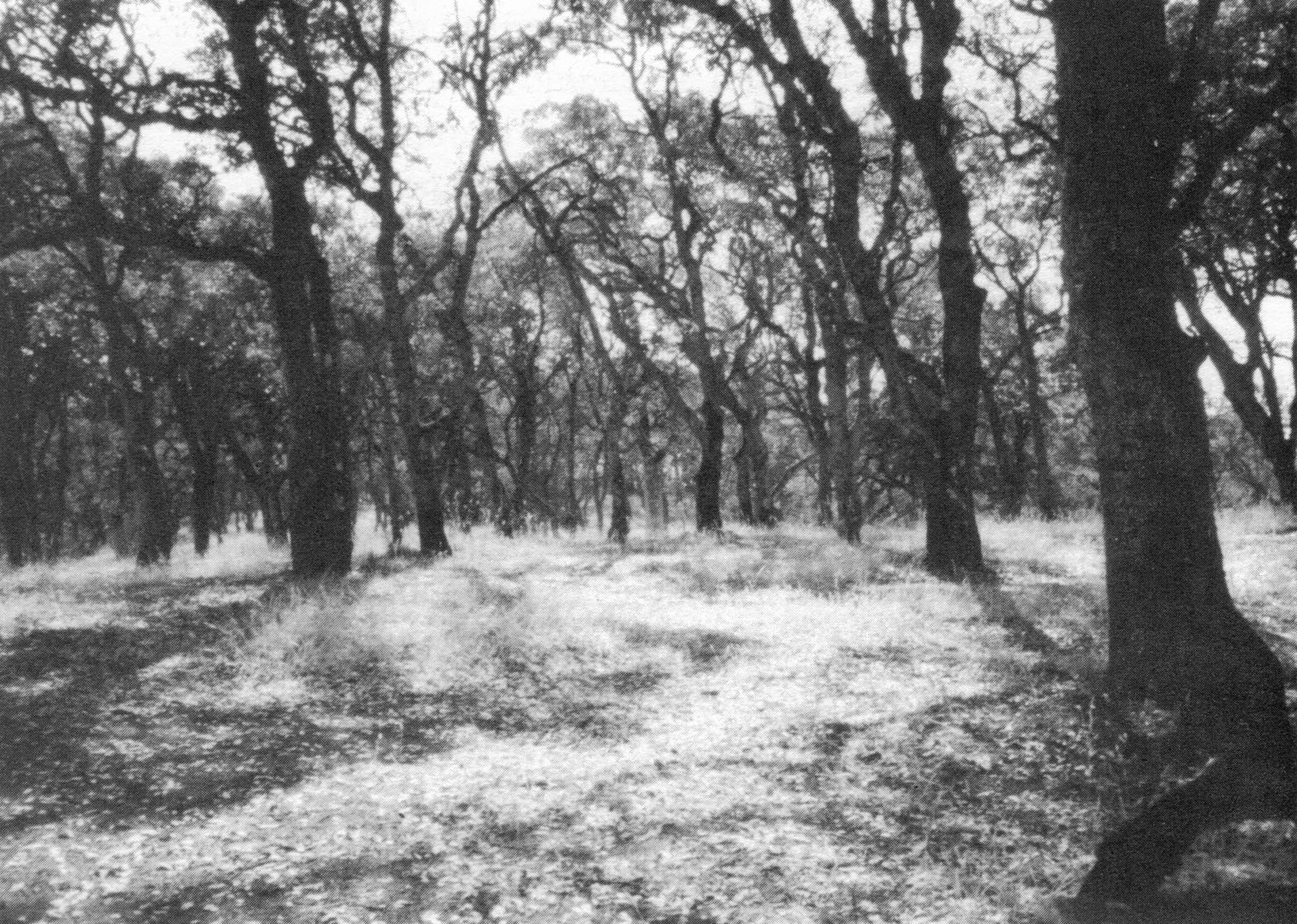
In the absence of recent canopy openings, a lack of saplings does not necessarily indicate that regeneration is poor. Blue oak advance regeneration remains suppressed by the overstory in well-stocked stands in Henry Coe State Park, so saplings will not be recruited under stable canopy.
For blue oak, we define the sapling stage as the transitional stage between seedling advance regeneration and overstory trees. This transitional sapling stage includes a size range from plants with basal diameters of 1 cm or more up to those with a DBH of 3 cm, a size range smaller than foresters would typically call saplings. Functionally, blue oaks have been recruited to the tree size class once they are safely beyond the browse line (typically about 150-170 cm). In many parts of its arid range, mature blue oak trees are less than 9 m tall, and may require 50 to 100 years to attain a DBH of 10 cm.
Like mature trees, sapling blue oaks are intolerant of overtopping and will slowly decline in heavy shade. Thus, saplings and small trees are most commonly found in the open even though small seedlings are almost exclusively located adjacent to or beneath blue oak canopy. This shift in spatial distribution comes about through the removal or natural mortality of overstory trees and subsequent release of seedling advance regeneration.
Under favorable conditions, blue oak seedlings and saplings can grow rapidly. However, under the moisture-limited conditions found over most of the blue oak range, saplings are tenacious rather than fast-growing. Several studies have shown that it has historically taken at least 10 to 30 years for blue oak stems to grow from ground level to a height of about 140 cm, an average of only 5 to 14 cm of height growth per year. The rate of sapling height growth is strongly affected by soil moisture and browsing.
A second pattern of blue oak regeneration from seed can also be observed, and may have been more common in presettlement blue oak woodlands. Blue oak seedlings can become established from acorns transported by animals to lightly shaded or open mesic sites if plant competition and herbivory are limited. Pioneer colonization of this type most commonly occurs in sites such as roadsides beyond pasture fences, where browsing is minimal and road runoff provides additional soil moisture. Artificial methods for establishing blue oak from seed are essentially based on producing such favorable microsites through weed control and protective enclosures. However, such "safe sites" are uncommon in woodlands used for livestock range.
Blue oaks can also regenerate from stump sprouts, particularly if the cut trees are fairly young and vigorous. Sprout-origin trees are often multi-trunked, or may have a single trunk with a sweep at the base where the old stump has callused over. Such trees usually make up a small proportion of blue oak stands, but localized patches with many sprout-origin trees occur. These dense resprout stands start with a uniformly young stand of blue oaks, such as second-growth recruited after an earlier cutting. If a young stand is then cut or topkilled, a dense resprout stand of third growth may result.
Effects of canopy and site conditions
In our survey, we found that most blue oak saplings are associated with canopy gaps created by cutting or natural overstory mortality occurring in the past 30 to 40 years. This is what we would expect if advance regeneration is the typical source of saplings and sapling growth is slow. If blue oak typically pioneers into openings, saplings should occur with equal likelihood in both recent and older openings. However, blue oak saplings are rare in old clearings or openings. This indicates that pioneer reproduction by blue oak is uncommon in rangelands, at least under recent conditions, and that advance regeneration is the source of most saplings we observed.
Many of the natural openings in which blue oak saplings occur were small, such as would result from the death of a single mature tree. Consequently, on a small scale, saplings were usually associated with overstory canopy. Out of the 1500 0.1 ha plots we surveyed, saplings were most abundant and most common in plots with 20% to 50% canopy cover even though they were usually in the noncanopied portions of these plots. Saplings were uncommon in plots with little or no canopy, unless the lack of canopy was due to a recent canopy gap. Saplings were also less likely to occur in heavily canopied plots, as would be expected for saplings intolerant of overtopping.
At the most xeric locations we studied, blue oak saplings were most likely to be found in relatively mesic sites. These included north-facing slopes, patches of deeper soil, and topographic positions that tend to collect runoff. However, in mesic locations, these site factors are often associated with dense mixed hardwood canopy cover. Because blue oak saplings do not survive under dense canopy, blue oak saplings tend to occur in the more xeric and open sites within mesic locations. In other words, blue oak saplings tend to occur in the worst sites in the best locations and the best sites in the worst locations. This sapling distribution mirrors the current distribution of mature blue oak along a xeric-mesic gradient.
Accounting for historical regeneration patterns
Several dendrochronological studies and other lines of evidence indicate that regeneration of blue oak was locally abundant in numerous widely-separated locations between the 1850's and early 1900's but has been scanty since then. Today, most blue oak woodlands are dominated by second and even third growth trees established between the Gold Rush and the 1930's, although both older and younger trees are found in some areas.
Several possible explanations for this age structure have been advanced, the most common of which are variants of the "lucky coincidence" hypothesis. This hypothesis suggests that regeneration is a rare event occurring when several favorable conditions converge: a large acorn crop, favorable winter/spring precipitation, and low pressure from acorn and seedling herbivores. Some suggest that fire is also necessary in the mix. However, it is difficult to imagine that blue oak would be as successful as it has been if its regeneration depended on such rare alignments. This hypothesis also fails to explain why these rare convergences suddenly became common throughout California during the first 50 to 80 years after the Gold Rush but have since become scarce.
We believe that most of the historic pulses of regeneration in the last 150 years can be explained as the release of established advance regeneration. This release was mainly caused by the liberal cutting and burning of the presettlement blue oak overstory that occurred between the 1850's and the first decades of the 20th century. Vast areas of California oak woodland were cleared for fuelwood, agriculture, and range during this period. However, the extent of oak woodland clearing conducted prior to the 1940's is poorly documented, perhaps due to the fact that "clearing the wilderness" was such a mundane and normal practice among California's early settlers.
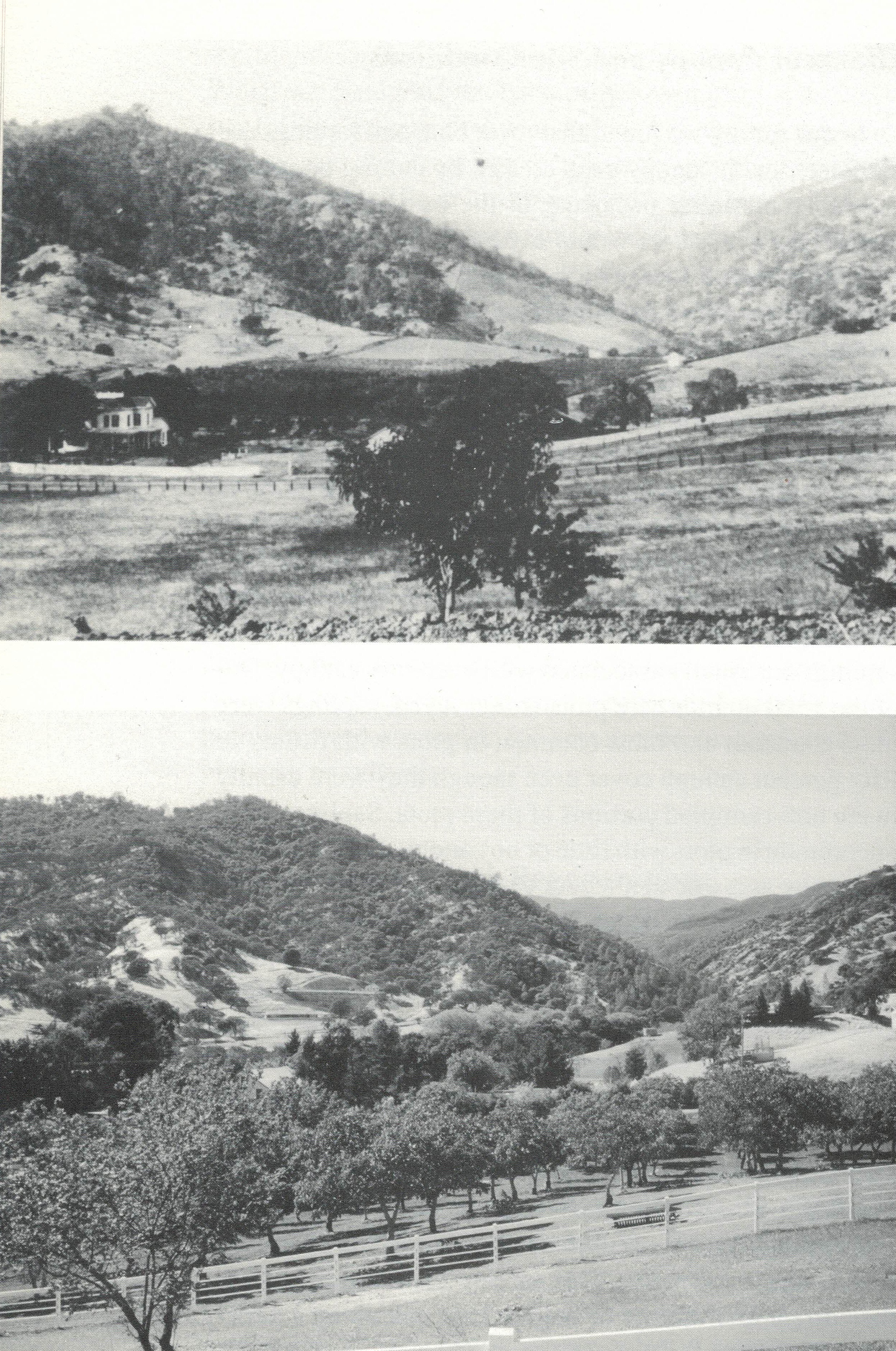
Views of Mix Canyon in the Vaca Mountains in the mid 1880s (top) and in 1997 (bottom). Several different stages of clearing and regrowth of advance regeneration are visible in the mid 1880s, thirty-five years or more after the area was settled. By 1997, some openings remain whereas others have been restocked by blue oak or other species including foothill pine (former clearing at right center), interior live oak, and California bay (along drainages). Top photograph courtesy of Vacaville Heritage Council.
Lithographs of mining towns made in the mid to late 1850's by Kuchel and Dresel show that large areas around these settlements had been cleared by that time. Bancroft describes the aftermath of the gold miners' workings as "...shorn stumps, midst unsightly mounds of earth, despoiled river beds, and denuded slopes, the ghastly battle-field of Titanic forces." Although mining had its greatest impact in the Sierran foothills, mining occurred throughout the range of blue oak, as miners searched for deposits of any valuable material: gold, mercury, copper, even coal. At each site, local trees would be cut for timbers, fuelwood, and simply to make way. As miners moved on to fresh diggings, settlers remained behind in the newly opened areas and cleared more woodlands for agricultural pursuits.
Clearing and lumbering were so widespread that by 1870, the California State
Agricultural Society warned that much of California's
easily accessible tree resources "have been most recklessly and uselessly
destroyed." By the 1880's, growing concern over the potentially adverse
environmental consequences of deforestation prompted the California Board of
Forestry to poll county officials about the status of forests and woodlands.
The response from Placer County
indicated that
Because California lacks any substantial coal deposits, wood and charcoal were the primary fuels used for heating and cooking into the early part of the 20th century. A small ranch would commonly use 15 to 20 cords (1275 to 1700 cu ft) of wood per year for heating and cooking. This would require the annual clearing of between 1 and 4 acres of moderately-stocked blue oak woodland (40-60% canopy cover). Willis Jepson estimated that between 1860 and 1938, local ranchers had cut at least 200,000 cords of fuelwood from the hills around Vacaville, at that time a small town amid fruit orchards. This volume is roughly the equivalent of a 10 square mile clear cut assuming about 80% canopy (30 cords/acre). Large amounts of fuelwood were also required for industrial uses including railroads, steamships, and smelters. In the 1880's, an iron foundry near Auburn reportedly consumed 10,000 to 15,000 tons of charcoal annually, requiring the annual harvest of up to 30,000 cords of wood (2,100 to 6,000 acres at moderate stocking). By 1910, Jepson noted that "[blue oak] is used for fuel and has been so largely drawn upon for this purpose that the first-growth has quite disappeared from many sections of the Sierra foothills".
Although many woodland and savanna stands were permanently obliterated during this period, blue oak clearly rebounded throughout the area that now constitutes its range. Especially after release, established blue oak seedlings exhibit a weedy tenacity because of their resprouting ability and are not easily eradicated. Lacking herbicides, early farmers could only kill established blue oak seedlings with deep cultivation, which was impossible on shallow and rocky soils, or repeated shoot destruction by grazing, fire, or cutting. In 1878, Redding noted that "ordinarily the land has to be cleared of trees found upon it, and cultivation must be continuous, for on the [foothills along] the whole western face of the Sierra the mature trees, when cut or burned down, are rapidly replaced by a new growth of the same kinds." Jepson also noted that "young growth from seed is in many places fully replacing the cut trees" in cleared blue oak stands. Because oak fuelwood was viewed as a necessary resource, natural restocking of blue oak from advance regeneration was undoubtedly allowed to proceed in many areas. Thus, incomplete destruction of advance regeneration allowed blue oak to survive both short-lived attempts at agriculture and routine wood harvesting and give rise to the stands that make up most of the current resource.
Oak fuelwood cutting diminished as other energy sources replaced wood, but clearing of oak woodlands was revived in the 1940's under the mantle of range improvement. Bolsinger estimated that California oak woodland cover was reduced by about 890,000 acres between 1945 and 1973 due to rangeland clearing activities. With government subsidies and technical help from UC Cooperative Extension, ranchers used heavy equipment and herbicides to more efficiently eradicate both overstory trees and virtually all woody understory plants. Many of these efforts have resulted in essentially permanent vegetation type conversion to annual grassland.
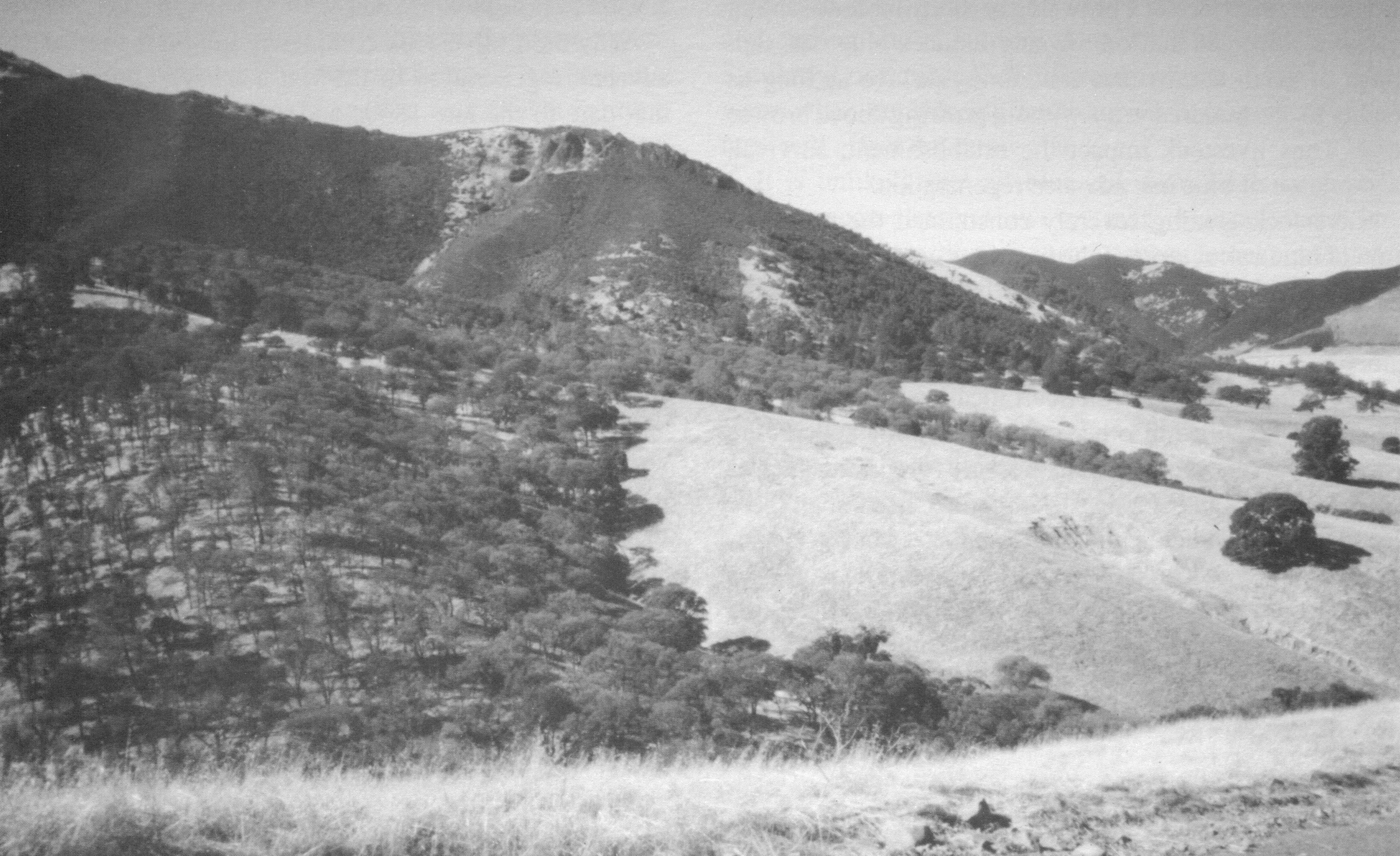
Because pioneering colonization by blue oak is rare in rangeland, old clearings are stable. The difference between the dense second growth stand (left) and clearing (right), shown here at Mt. Diablo State Park, reflects management differences that allowed advance regeneration to recruit left of the fence line but destroyed it on the right.
Sustainable management of blue oak woodlands
Mechanical cutting and clearing, livestock grazing, fire, and the introduction of non-native grasses and forbs have been the most important management inputs in blue oak woodlands. These disturbances have altered the composition of the oak woodland understory, habitat for native herbivores and their predators, and soil conditions. As a result, the environment that blue oak advance regeneration must establish and persist in may now be vastly different from presettlement conditions. Unfortunately, baseline information on presettlement conditions is largely lacking, so the magnitude of these changes can only be inferred. Furthermore, there is clearly no way to return to pristine conditions, due to the ubiquitous presence of introduced vegetation. If blue oak woodlands are to survive, we must determine how to manage for regeneration in this altered ecosystem.
An understanding of advance regeneration and gap dynamics provides a framework for interpreting both current and past regeneration patterns in the light of management practices. According to the model, a narrow window of opportunity exists for sapling recruitment from advance regeneration when overstory mortality occurs. Advance regeneration must be adequate before canopy loss and must be allowed to grow after canopy loss. If these conditions are met, a pulse of regeneration can result. If the production, survival, and/or release of advance regeneration is inhibited, overstory mortality will result in stable openings that cause the stand to thin, eventually to the point of extinction.
The relatively even-aged stands now found in many blue oak woodlands represent an additional challenge for sustainable management. It is likely that presettlement stands were mostly uneven-aged, with scattered mortality and recruitment in canopy gaps. As current even-aged stands age, they will be much more susceptible to widespread declines affecting large blocks of trees, requiring regeneration of the entire stand over a short period of time if the stand is to remain viable.
Effects of grazing
Because most current blue oak woodlands are used as rangeland, grazing is a management factor that must be scrutinized. Long-term livestock grazing has more potential to adversely affect blue oak regeneration than any other factor. Cattle eat acorns, reduce or eliminate the litter layer beneath trees, and compact the soil, thereby reducing the potential for initial seedling establishment. Surviving seedlings are repeatedly browsed and trampled, which shortens the life of individual seedlings and can deplete or eliminate the persistent seedling bank over time. Under even moderate stocking rates, livestock browsing severely inhibits sapling growth. Repeated cattle browsing reduces blue oak saplings to small shrubs sometimes survive as long as 80 to 100 years without growing above browse line. Thus livestock impact the establishment, survival, and release of blue oak advance regeneration.
Livestock grazing severely constrained the regeneration of blue oak at most of the locations we studied, but the impact of grazing isn't limited to blue oak regeneration. Reproduction of most other woody species in the understory was also virtually eliminated under moderate to heavy grazing pressure. In such locations, blue oak saplings and juveniles of other palatable woody species are limited to areas where grazing pressure is reduced, such as on steep slopes and among rock outcrops. In some of these locations, only juveniles of less palatable woody species such as chamise (Adenostoma fasciculatum), manzanita (Arctostaphylos spp.), and live oak (Q. agrifolia and Q. wislizenii) were able to survive in the understory. These observations are hardly surprising. The negative effects of grazing on palatable species was common knowledge over a century ago, as seen from this 1886 observation by the California State Board of Forestry : "No fact is better established than that improper pasturage...kills out the useful fodder plants and all young growths of trees".
Blue oak regeneration does not generally respond quickly to a cessation of grazing because simply removing livestock does not cause the landscape to revert to its presettlement condition. Management inputs may be necessary to favorably alter the composition and density of herbaceous vegetation. Rodent populations may be high due to lack of predators and abundant introduced grasses. Many years may be needed to reestablish healthy populations of advance regeneration which are available to be recruited in new canopy openings. Even if a site is no longer grazed, old clearings are unlikely to be colonized, and saplings will not grow up under heavy tree canopy. If regeneration is being constrained by several factors, changing only one factor may not be sufficient to allow regeneration to proceed.
Why didn't livestock completely inhibit the release of advance regeneration in the last century? Various old clearings that date to the late 1800's and early 1900's probably do represent areas where regeneration was inhibited by grazing. However, the relatively consistent grazing regimes that now typify much of the blue oak range were not established in many areas until the first few decades of the 20th century or even later. In much of California, livestock were originally grazed on unfenced range. In the late 1800's, some huge herds of sheep and cattle were seasonally ranged in the Coast Ranges, the Central Valley, and the foothills and mountain meadows of the Sierra Nevada. Livestock populations were not stable, as herds were periodically decimated during episodes of drought. Parcels were subject to ownership disputes and changes, cycles of partitioning and consolidation that resulted in a complex mosaic of grazing histories throughout the range of blue oak. Thus, regeneration was more common during a period when grazing impacts were more inconsistent and variable over time, but has become uncommon under the consistent seasonal and year-round grazing regimes of the past half century.
Grazing is a broad term that encompasses different types of animals and stocking rates, season and duration of use, and year to year consistency. The impact of grazing on regeneration is further influenced by the species composition and productivity of the herbaceous layer, soil types, weather conditions, distribution of water sources, and other factors. In almost any site, grazing will tend to reduce the reproductive potential of blue oak. Whether this reduction will critically limit regeneration will vary between locations, and may vary between years at a given location. Grazing impacts will be most pronounced in stands with less than about 25% canopy cover, in xeric sites, especially those at the edges of the current blue oak range, and in locations with gentle topography which are grazed very uniformly. Consistent grazing on an annual basis may inhibit regeneration more than rest rotations that periodically take parcels out of grazing for one or more years.
Deer can also negatively affect seedlings and saplings, but they generally cause less damage than livestock for several reasons. Cattle cause more shoot damage because they typically chew into larger-diameter stems than do deer. Cattle will also destroy the growing points of stouter saplings by scratching themselves against stems. Compared with deer, browsing pressure from fenced livestock is generally more intense, more consistent, and consequently more damaging to oak regeneration.
Effects of fire
Fire plays an important role in the maintenance of numerous plant communities in California. Human activities over the past 150 years have changed the frequency and intensity of fires in blue oak woodlands, prompting speculation that fire may favor blue oak regeneration. Based on our model of blue oak regeneration, it is conceivable that fire could promote sapling recruitment in some instances by killing decadent overstory trees and releasing advance regeneration. However, several studies have shown no positive effect of fire on seedling establishment or survival. Our blue oak sapling survey data do not indicate that fire is requisite for sapling recruitment.
In June 1997, we surveyed an oak stand with many small blue oak saplings that had burned in a September 1996 grass fire. In this relatively light fire, 6% of the saplings died and almost all saplings less than 150 cm tall and/or with basal diameters of less than 5 cm were completely topkilled. Nearly a year after the fire, post-fire shoot biomass was clearly much lower than prefire biomass for all but the smallest topkilled saplings. At Pinnacles National Monument, we found that saplings were least likely to occur in plots that had experienced multiple fires over a five year period.
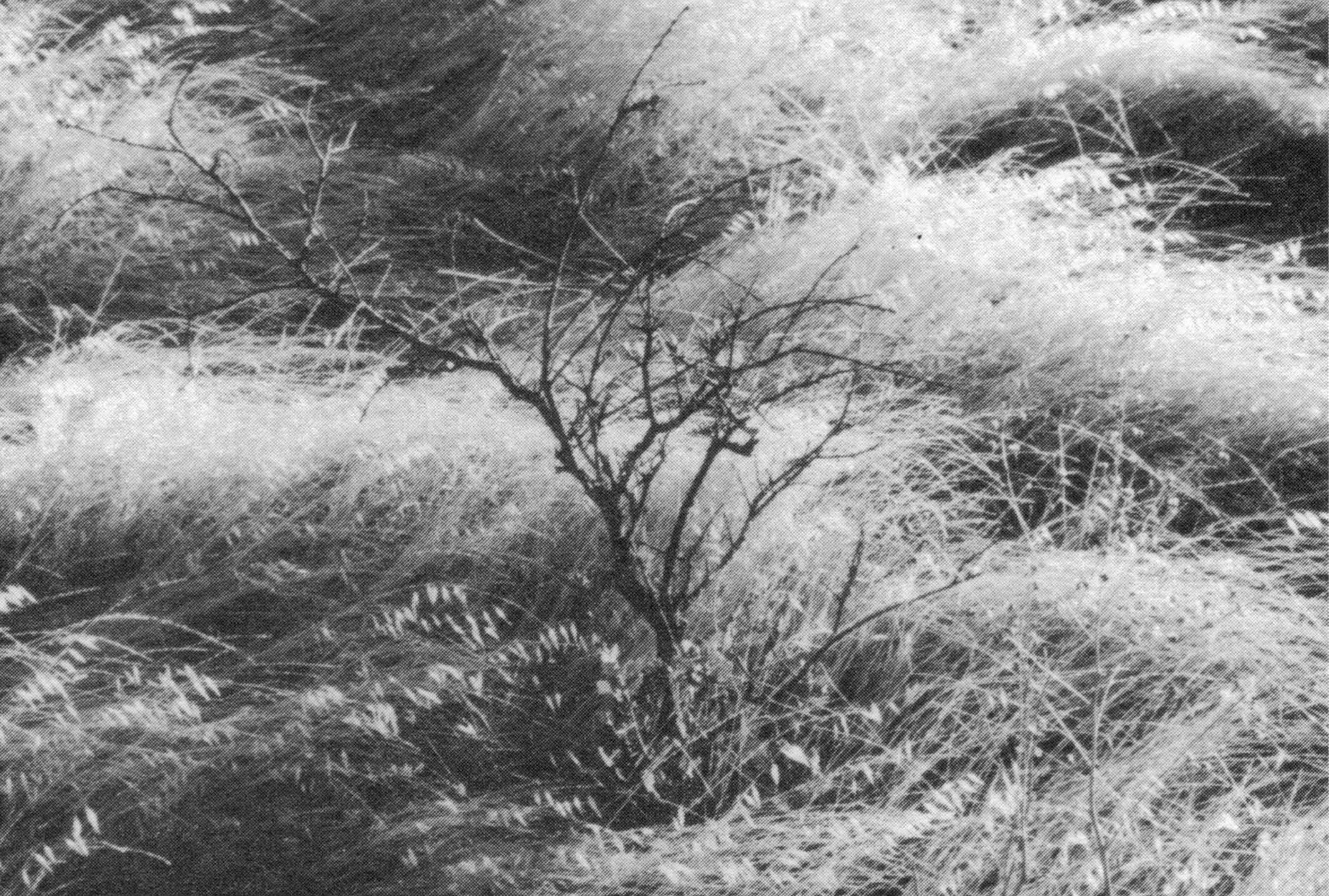
Resprouting of a blue oak sapling topkilled in a grass fire about one year earlier. Top growth has not been enhanced by fire.
Fire scar and tree ring analyses have been used to document historical associations between fire and apparent tree age at several locations. However, such studies do not provide evidence of fire-dependent regeneration. When topkilled saplings resprout after a fire, the resulting shoots date to the time of the fire. A correlation between fire and tree age will therefore exist whether fire's influence on recruitment is positive, negative, or neutral.
Blue oak is effectively a fire tolerant rather than a fire dependent species. Mature blue oaks are relatively fire resistant, and both saplings and seedling advance regeneration are capable of resprouting after fire. However, the capacity of these juvenile oaks to resprout can be exceeded if fires are frequent. A combination of frequent fires and annual livestock grazing would therefore be a prescription for eliminating blue oak regeneration. This combination has undoubtedly been used in the past to convert former woodlands to annual grassland.
An uncertain future
Low sapling populations do not necessarily provide evidence of a regeneration problem. We must also determine where saplings do and do not occur. According to the model of regeneration described here, saplings should be rare in densely canopied stands. Old clearings may represent past failures of regeneration, but we should not expect that blue oaks will now aggressively invade these openings. However, we should expect to find saplings in recent openings caused by mortality of mature overstory oaks. Because this is not the case in many locations, we conclude that blue oak regeneration is failing in these locations.
In most sites, it is not possible to meaningfully interpret current patterns of regeneration without considering at least 30 years of site history. The process of blue oak regeneration typically occurs over a period of many years, and current site conditions do not tell the whole story. Similarly, one must look forward in time 30 to 50 years when considering how current management practices will affect the future stand.
It is unlikely that all blue oak woodlands will completely disappear soon. However, many blue oak stands are headed for extinction if current management practices persist. In many areas, blue oak savanna is slowly being converted to annual grassland as old trees die out. In some of these very open stands, planting may be the only way to regenerate blue oaks. In many other areas, natural regeneration may still be possible.
If blue oak is to be managed as a sustainable resource, grazing practices will need to be modified in many areas. Land managers must also monitor the status of advance regeneration before, during, and after canopy or understory manipulations. Although there is legitimate concern over the effects of urbanization on blue oak habitats, the woodlands are under an equally serious threat from livestock ranching practices that reduce or eliminate the regeneration of blue oak and other native species growing in the understory. Twenty years after Holland's first call in Fremontia, it is perhaps again time to speak in defense of blue oaks in order to protect this resource for the next generation.

Open savanna stands of blue oak, such as here at Black Butte Lake, are at greatest risk of extinction due to unreplaced mortality in grazed rangelands, especially in xeric locations. Some natural regeneration may be found at such locations in areas of reduced browsing pressure, such as rock outcrops, steep slopes, and areas far from water sources.
Selected references
Bancroft, H. H. 1888. History of California. Vol. IV. 1848-1859. The History Company, San Francisco.
Bolsinger, C. 1988. The hardwoods of California's timberlands, woodlands, and savannas. Resource Bull. PNW-RB-148. Pacific Northwest Research Station, U.S.D.A. Forest Service, Portland.
California State Board of Forestry. 1886. Biennial report. State Printer, Sacramento. California State Agricultural Society. 1870. Transactions of the California State Agricultural Society. State Printer, Sacramento.
Haggerty, P. K. 1991. Fire effects in blue oak (Quercus douglasii) woodland in the southern Sierra Nevada, California. Davis: University of California; M.S. thesis.
Jepson, W. L. 1910. The silva of California. Memoirs Univ. of Calif., vol. 2. Univ. of Calif. Press, Berkeley.
Jepson, W. L. 1938. Happy days at Little Oak Ranch, Volume 1. Unpublished memoir. Vacaville Museum, Vacaville, CA.
McClaran, M. P. 1986. Age structure of Quercus douglasii in relation to livestock grazing and fire. Ph.D. Dissertation, Univ. of Calif., Berkeley.
Mensing, S. A. 1992. The impact of European settlement on blue oak (Quercus douglasii) regeneration and recruitment in the Tehachapi Mountains, California. Madroņo 39 (1): 36-46.
Muick, P. C.; Bartolome, J. R. 1987. An assessment of natural regeneration of oaks in California. Prepared for: Calif. Dept. of Forestry, Sacramento.
Oliver, C. D.; Larson, B. L. 1990. Forest stand dynamics. McGraw-Hill, Inc., New York Redding, B. B. 1878. The foot-hills of the Sierra. In: Transactions of the California State Agricultural Society. State Printer, Sacramento.
Rossi, R. S. 1980. History of cultural influences on the distribution and reproduction of oaks in California. In: Gen. Tech. Rep. PSW-44. Pacific Southwest Forest and Range Experiment Station, U.S.D.A. Forest Service, Berkeley.
Swiecki, T. J.; Bernhardt, E.; Drake, C. 1993. Factors Affecting Blue Oak Sapling Recruitment and Regeneration. Prepared for: Calif. Dept. of Forestry and Fire Protection, Strategic Planning Program, Sacramento.
Swiecki, Tedmund J.; Bernhardt, Elizabeth A.; Arnold, Richard A. 1990. Impacts of diseases and arthropods on California's rangeland oaks. Prepared for: California Department of Forestry and Fire Protection, Forest and Rangeland Resources Assessment Program, Sacramento, CA.
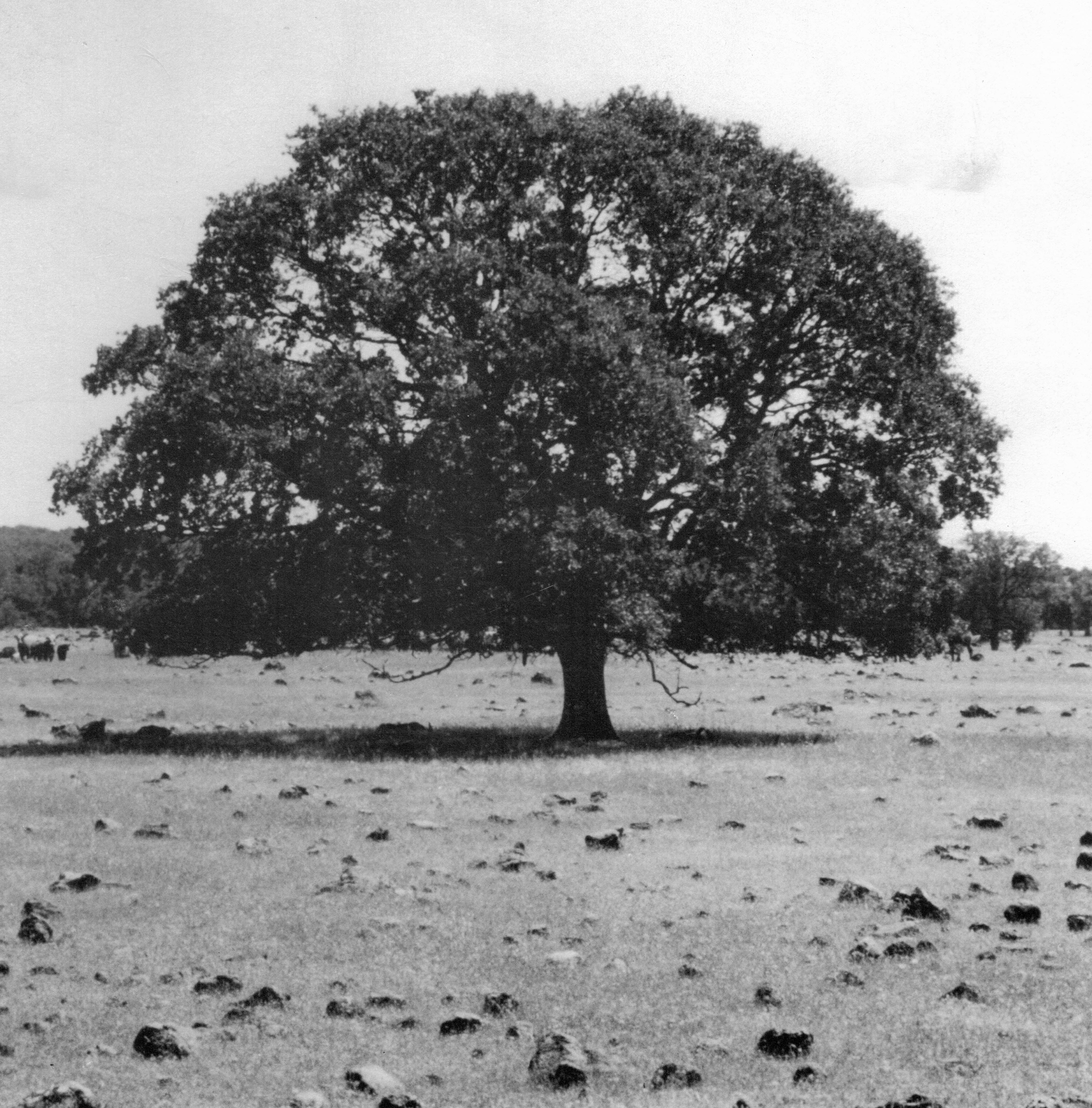
Issue cover image: Livestock ranching practices on the Dye Creek Preserve near Susanville have led to the complete suppression of woody understory plants, including blue oak seedlings and saplings.